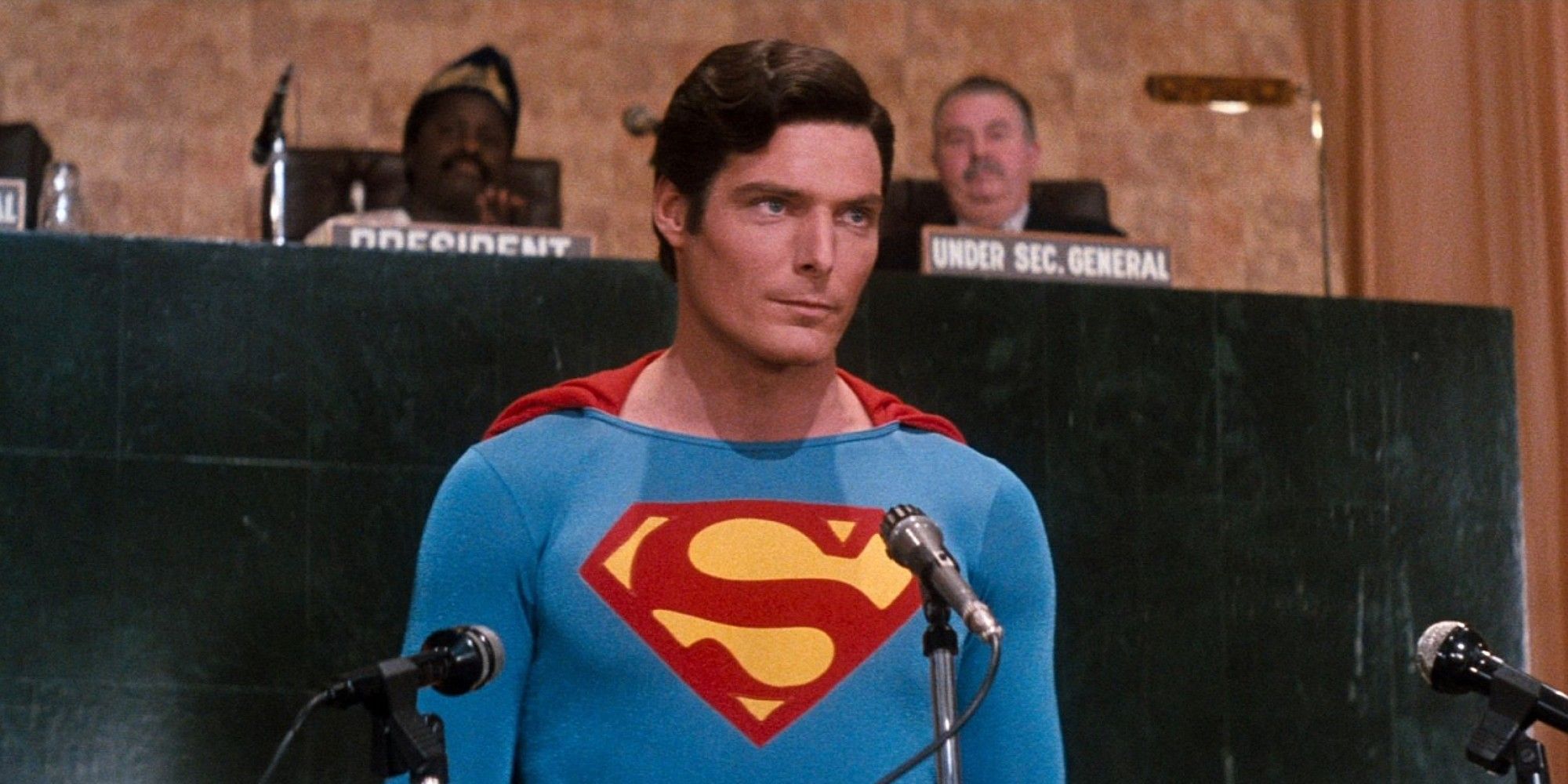In a 1941 animated short called "The Mechanical Monsters,” Clark Kent calls the Daily Planet about a robotic robbery and then uses the phone booth he's in to change into his powerful alter ego, Superman, so as to rescue Lois Lane. This episode, which was produced by Fleischer Studios, was the first time the Man of Steel changed using a phone booth, and the move quickly became a popular part of the hero's lore. The phone booth was used in radio serials, TV shows, comics and advertisements for the Bell Telephone Company (now AT&T) following that appearance, and the legacy is so large that even the teaser trailer for Deadpool 2 referenced the move. However, Superman using a phone booth to change only appeared once in the Man of Steel's most influential adaptations: the Christopher Reeve films.
It’s hard to overstate the impact of 1978's Superman: The Movie. While the Man of Steel was already an American icon, Richard Donner's first film focusing on Superman elevated the hero's source material without sacrificing the campy sincerity at its core. One of the film's biggest accomplishments is updating Superman for contemporary society at the time. This is embodied by how Superman references the phone booth.
In Superman, the titular hero, played by Reeve, sees Lois Lane (Margot Kidder) about to have an accident in a helicopter. As Clark rushes away from the crowd to change, he takes a second to look at an open-design payphone. Undeterred, Clark instead changes inside a revolving door. Still, this sly in-joke demonstrates that, by 1978, Clark Kent and phone booths were so well associated that Superman could reference and subvert the convention of him changing in one. It also furthers Superman’s question about whether the Man of Steel's old-fashioned sensibilities can fit inside a modern society that had changed so much that even the phone booths were different.
However, Reeve's version of Superman did up using a phone both to change. In 1987's Superman IV: The Quest for Peace, a subway conductor has a sudden heart attack, leaving Lois and other citizens of Metropolis trapped on a runaway train. Waiting on the crowded platform, Clark hears the cries for help, and steps into a private phone booth before re-merging as Superman. The movie doesn't linger on Clark using this classic location to change. Instead, the editing is rather rapid, with the phone booth relatively obscure, making it unclear if this is meant to even be an intentional homage.
Over the decades since Superman IV, the phone booth has been less commonly used in media focusing on the Man of Steel. Shows like Lois & Clark (1993-1997) and Smallville (2001-2011) made references to it, but there was no phone booth in Superman: The Animated Series, Justice League cartoons or in any other cinematic adaptation.
The primary reason for Superman no longer changing in phone booth relates to how outdated they've become over the decades. That was the joke back in the 1978 Superman, and now even the payphones featured in that film are being disconnected. Phone booths are irrelevant in our current interconnect age of smartphones, and now only four remain in the whole of New York City, and those are being kept around mostly for posterity. However, the association between Superman and phone booth remains even decades later, even if the Man of Steel has adapted and changed to fit the times.
KEEP READING: How Richard Donner Saved Superman - and Created the Modern Superhero Movie

